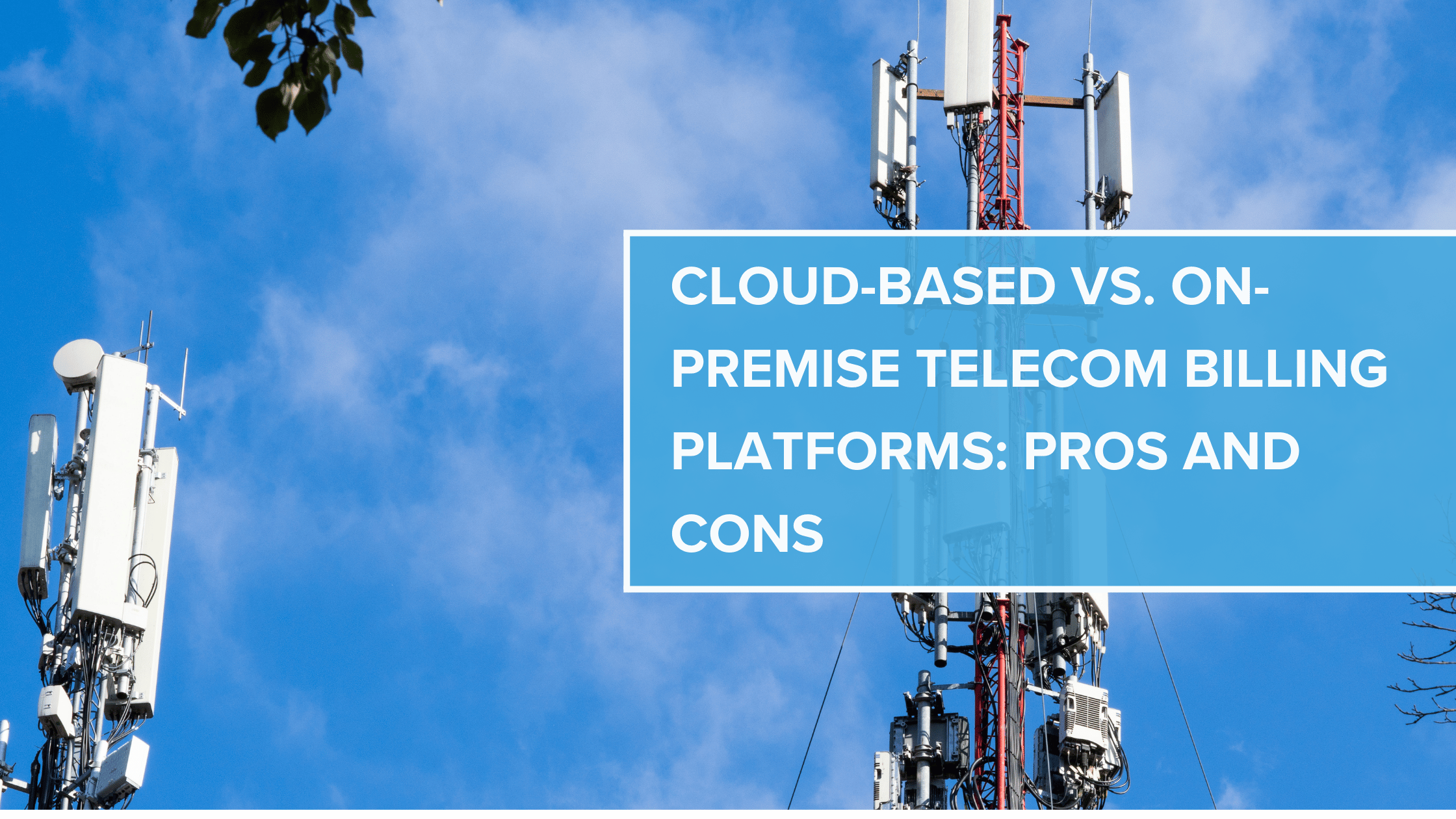Cloud-Based vs. On-Premise Telecom Billing Platforms: Pros and Cons
Introduction:
As the telecom industry continues to evolve, providers face critical decisions about the systems they use to manage billing processes. One of the most significant choices is whether to adopt cloud-based or on-premise telecom billing platforms. Each option comes with its own set of advantages and challenges, making it essential for telecom companies to understand which solution best aligns with their operational goals. This article will explore the pros and cons of cloud-based and on-premise telecom billing platforms and highlight how **Emersion** stands out with its robust cloud-based solutions.
The Rise of Cloud-Based Telecom Billing
Cloud-based telecom billing platforms have gained popularity for their ability to offer flexibility, scalability, and cost-effectiveness. However, understanding the pros and cons of cloud-based versus on-premise systems is crucial for making informed decisions.
Pros of Cloud-Based Telecom Billing Platforms
- Scalability: Cloud-based solutions can easily scale with the business, accommodating growth without the need for additional hardware or software purchases.
- Cost-Effectiveness: Typically, cloud solutions operate on a subscription basis, reducing upfront costs associated with purchasing and maintaining on-premise hardware.
- Automatic Updates: Cloud platforms are regularly updated by the provider, ensuring users always have access to the latest features and security enhancements without manual intervention.
- Accessibility: Users can access cloud-based systems from anywhere with an internet connection, enabling remote work and enhancing operational flexibility.
- Enhanced Collaboration: Cloud solutions facilitate better collaboration among teams by providing real-time access to shared data and documents.
Cons of Cloud-Based Telecom Billing Platforms
- Dependency on Internet Connectivity: Cloud-based solutions require a stable internet connection; disruptions can impact access to critical billing systems.
- Ongoing Subscription Costs: While initial costs may be lower, ongoing subscription fees can accumulate over time, leading to higher long-term costs.
- Data Security Concerns: Storing sensitive billing information in the cloud can raise security concerns for some organizations, particularly in highly regulated industries.
Pros of On-Premise Telecom Billing Platforms
- Control Over Data: On-premise solutions allow telecom providers to maintain complete control over their data and infrastructure, which can enhance security and compliance.
- Customization: Organizations can tailor on-premise systems to their specific requirements without relying on a third-party vendor’s capabilities.
- No Internet Dependency: On-premise solutions do not rely on internet connectivity, ensuring uninterrupted access to billing systems.
Cons of On-Premise Telecom Billing Platforms
- Higher Upfront Costs: The initial investment for on-premise systems can be significant due to hardware, software, and installation expenses.
- Maintenance Responsibility: Organizations are responsible for maintaining, updating, and securing on-premise systems, which can divert resources from core business functions.
- Limited Scalability: Scaling on-premise systems often requires additional hardware purchases and setup, which can be time-consuming and costly.
Why Choose Emersion’s Cloud-Based Billing Solutions?
**Emersion** offers robust cloud-based telecom billing solutions that address the challenges faced by telecom providers:
1. Flexibility and Scalability
Emersion’s cloud-based platform is designed to scale with your business, accommodating growth and changes in service offerings without the need for significant additional investments.
2. Comprehensive Security Measures
Emersion prioritizes data security, employing state-of-the-art security protocols to protect sensitive billing information. Explore how Emersion’s security features can safeguard your data.
3. Cost-Effective Pricing Models
With subscription-based pricing, Emersion offers a cost-effective solution that reduces upfront costs and aligns with the financial strategies of telecom providers.
4. Continuous Updates and Support
Emersion’s platform is regularly updated to incorporate the latest features and regulatory requirements, ensuring that your billing system remains current and compliant.
5. Seamless Integration Capabilities
The platform integrates effortlessly with existing systems, enhancing operational efficiency and streamlining workflows. Discover Emersion’s integration capabilities for a smoother transition.
Conclusion
Choosing between cloud-based and on-premise telecom billing platforms requires careful consideration of the unique needs of your organization. While on-premise solutions may offer certain advantages, the benefits of cloud-based systems—such as scalability, flexibility, and cost-effectiveness—make them an attractive option for many telecom providers. **Emersion** stands out as a leader in cloud-based billing solutions, providing features that meet the evolving needs of the telecom industry.
Call-to-Action
Are you ready to enhance your telecom billing processes with a robust cloud-based solution? **Emersion** offers tailored software designed to meet your specific needs. Contact us today to learn how Emersion can support your billing initiatives and help you achieve operational excellence.
Questions for Reflection
- How effectively is your organization currently managing its billing processes?
- What specific features are most important to your team when selecting a billing platform?
- How can improved billing solutions enhance your organization’s overall profitability?
- What criteria will you use to evaluate the effectiveness of your chosen billing solution?
- How can you ensure that your organization remains agile in adapting to changes in customer demands and regulatory requirements?
Learn more about Emersion’s billing automation solutions and how they can help your organization thrive while improving operational efficiency. Explore our resources to stay updated on best practices and industry insights.


